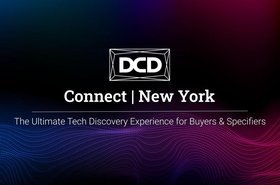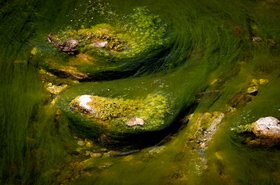These days it would be impossible to get through a data center event without debating sustainability, and for good reason.
The first major panel of our recent DCD>Connect New York event discussed the importance of getting transparent on digital infrastructure sustainability metrics and preparing for more regulation. A highly topical debate, given the US Securities and Exchange Commission’s newly proposed climate risk disclosure rule.
While there can be hesitation to really put it all out there (I mean, who really likes to be exposed?) transparency is essential to the continued progression towards true sustainability in the industry.
As pointed out by Adam Kramer, CEO of nZero, in talking about New York’s local law 97 – a sustainability requirement on buildings over 25,000ft – without sharing sustainability metrics we cannot progress as an industry.
“It is focused really more on how you're reporting out and how you're tracking the sustainability metrics of your building; how you're using this data to create comparative analysis from one building to another, trying to create more of an apples-to-apples comparison. At the end of the day, you can't change what you can't measure.”
Cristy House, senior client development manager for Schneider Electric’s Energy & Sustainability Services reinforced this idea that ‘you can’t track what you are not measuring’ but suggested that it is not just at the local law level.
“We're starting to see this everywhere in the EU with the sustainable finance disclosure, regulation, or EU taxonomy.
“As more and more cities have net-zero goals at the city level, we're seeing more and more regulations driving the climate change initiative, for better or worse. Sustainability used to be a nice-to-have, now with the regulations in place it's a must-have.”
We all concur that sustainability regulations are positive – after all, we all want to save our planet. But that does not mean they don’t come with complications. Regulations add more rules and restrictions to operations and it can be a huge task to restructure businesses.
This is particularly notable with the previously mentioned proposed SEC climate regulation. The new regulation means that any publicly traded company is going to have to report their scope one and two emissions and, depending on the size of the company, any material scope three emissions and get third-party verification.
This presents a significant change and is transparency that the industry not only isn’t used to, but is still trying to find the optimum ways to achieve this.
Benoit Allehaut, managing director at KKR also sees inherent issues with the practical side of attempting to improve your sustainability metrics, and appease the government’s development goals, all while reducing the power consumption.
“Governments are worried about power consumption. On the other hand, they want data privacy to stay within the country, so they're imposing the localization of data centers for data preservation.
“But this has a lot of contradictory effects throughout the market. The data center industry arrived in a market where energy costs had been going down for decades and there was an expectation that things will continue getting cheaper.
“We're in a reversal trend right now. There is legislation that is happening, that is creating constraints. Virginia has 70 percent of the world's traffic on the internet, which is mind-boggling. But Virginia, for example, has a local law on having renewable builds within the state. So if everybody's building data centers, there are not enough renewable projects for this, like playing a game of musical chairs.”
Can we draw a conclusion from this debate? Probably several. More transparency is needed, expectations are rising, the cost of energy is increasing and it is a huge challenge to data center operations. But by working as an industry, these challenges will be far easier to overcome.
Want to come to the next DCD>Connect event? Get your pass here!





